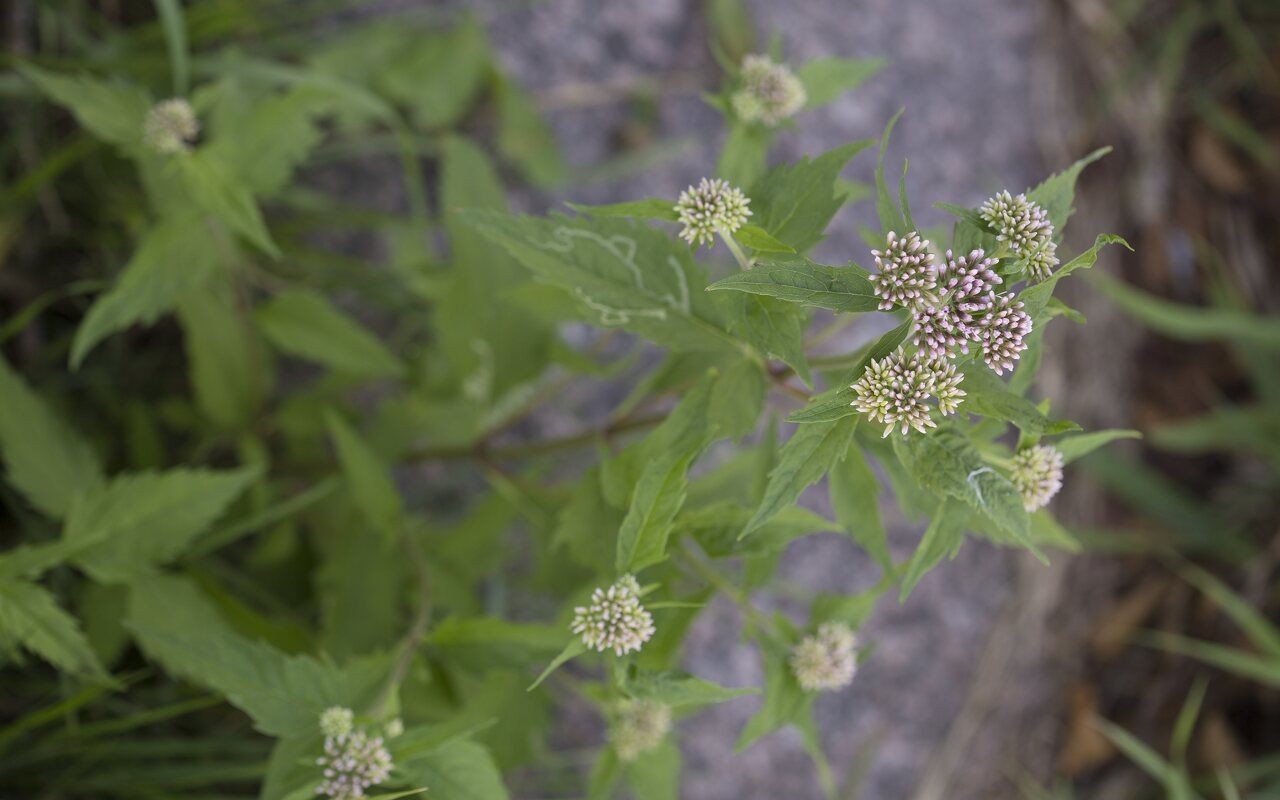
Eupatorium cannabinum · kanapinis kemeras
- hemp-agrimony, holy rope
- Gewöhnlicher Wasserdost
- kanapinis kemeras
- lielā krastkaņepe
- sadziec konopiasty
- en.wikipedia.org/wiki/Eupatorium_cannabinum
- luontoportti.com/en/t/1193/hemp-agrimony
- gbif.org/species/5402943
If the genus Eupatorium is defined in a restricted sense (about 42 species), E. cannabinum is the only species of that genus native to Europe (with the remainder in Asia or North America). It is attractive to butterflies. It is cultivated as an ornamental and occasionally found as a garden escape in scattered locations in China, the United States and Canada.
Eupatorium cannabinum is a perennial herb up to 1.5 m tall or more and 1.2 m wide. The plant has a dark red or purplish stem, covered in small hairs. It is dioecious, with racemes of mauve flower heads which are pollinated by insects from July to early September. The flowers are visited by many types of insects, and can be characterized by a generalized pollination syndrome. The flower heads are tiny, fluffy and can be pale dusty pink or whitish. The fruit is an achene about 2 or 3 mm long, borne by a pappus with hairs 3 to 5 mm long, which is distributed by the wind. The plant over-winters as a hemicryptophyte.
Stiebas 50-170 cm aukščio, stačias, neretai raudono atspalvio, apaugęs trumpais plaukeliais. Žydi liepos – rugsėjo mėn. Auga šlapiuose upių ir ežerų krantuose, šlaituose, šlapiose pakrūmėse. Dažniausiai auga sąžalynais, mėgsta kalkingas dirvas. Iš šakniastiebių ir lapų gaunami mėlyni ir juodi dažai.
‥